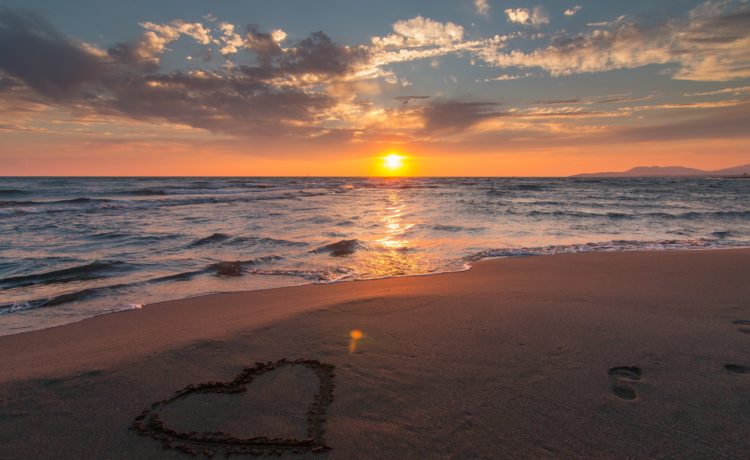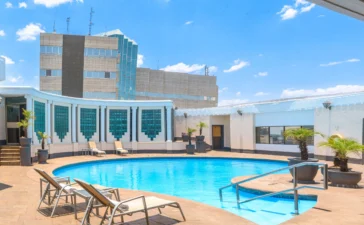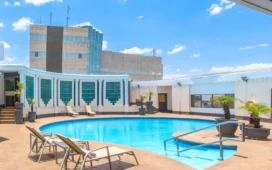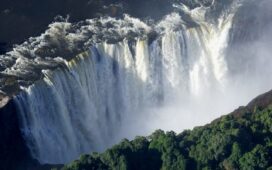Recently updated on March 27th, 2024 at 02:00 am
Have you noticed? Africa is embracing eco-tourism, whereby tourism activities are aimed at not, but only bringing in revenue but also conservation of natural resources as well as a means to benefit the local communities in various capacities. And some spots in Africa have, which been created in an eco-friendly backdrop which is all about uniting conservation, communities and sustainable travel.
Everyone agrees it’s important to preserve Africa’s natural and cultural wonders for the future. But are you a green traveller? A responsible eco-tourist? A sustainable supporter? By being a conscientious traveller and staying in accommodations that put high value on preservation and minimising the negative impact on your surroundings, your stay can have a positive impact.
To help you in this quest, we’ve listed a few places you can stay on safari that are eco-conscious.
Campi ya Kanzi, Kenya
Campi ya Kanzi was the first camp in Kenya to be gold rated by Ecotourism Kenya for its efforts in sustainable tourism. One of the most environmentally friendly camps in East Africa, this lovely camp, whose name means “Camp of the Hidden Treasure” in Kiswahili, is in the Kuku Group Ranch, the natural corridor between Amboseli and Tsavo National Parks.
It was the first camp in Kenya to be gold rated by Ecotourism Kenya for its efforts in sustainable tourism, and has won other prestigious international ecotourism awards. It’s also co-owned by the Maasai from the ranch area Luca Belpietro and his wife, Antonella Bonomi.
The ranch itself stretches 1,115 square km (400 square miles) from the foothills of Mt. Kilimanjaro to the Chyulu Hills in the east, and because of the different altitudes, you’ll find all sorts of habitats, from wide plains and riverine bush to high mountain forests. You’ll also find plenty of game—more than 60 mammals and 400 bird species—but few tourists. To see all this, choose between game drives (where the game is really wild and not used to vehicles), guided game walks, botanical walk, bird-watching, and cultural visits.
Take your kids to the Maasai school and open their eyes to a completely different way of life. The main lounge and dining areas are in Tembo (Elephant) House, which has superb views of Mt. Kilimanjaro, the Taita Hills and Chyulu Hills. All the tents have great views, as well as wooden floors, a veranda, and an en suite bathroom with bidet, flush toilet and hot and cold running water. The Hemingway and Simba tented suites boast king-size beds, a dressing room, en suite bathroom with his-and-her washbasins, and verandas overlooking Mt. Kilimanjaro.
*Note that there is an additional US$100 per-person, per-day conservation fee, which entirely benefits the local Maasai community.
Sindabezi Island, Zambia
Sindabezi Island is the Zambezi’s most environmentally friendly property. The island makes use of recycled wood chips and solar power for heating, all the gray water is recycled, and the chalets are constructed mainly from sustainable forests. There’s a strict 10-guest limit and each of the island’s chalets is raised on a wooden deck built artistically around the existing trees.
There is absolutely no electricity on the island, and hot water is provided on demand. If your party books Sindabezi exclusively, the guide, boat and land vehicle are at your disposal.
Dinner is served by lantern and candlelight on a sandbank or wooden deck under the stars.
Porini Rhino Camp, Kenya
Porini Rhino Camp is the largest black rhino sanctuary in East Africa. The camp has no permanent structures and is strategically constructed around trees and shrubs to minimise the human footprint on the natural landscape. The camp uses solar power for electricity, and water is heated with eco-friendly, sustainable charcoal briquettes; there is no generator. The conservancy is owned by the local Masai, and the camp is run with the aim of creating income for the tribe.
This delightful eco-friendly tented camp is nestled among Kenya’s ubiquitous Acacia tortilis trees in a secluded valley in the Ol Pejeta Conservancy. This 90,000-acre stretch of game-rich wilderness lies between the snow-capped Mt. Kenya and the foothills of the Aberdares.
This location treats guests to a double whammy—abundant game including the Big Five, wild dog and the endangered black rhino and superb views across the open plains. Each beautifully placed tent has stunning views from its personal veranda, and inside there’s an en-suite bathroom with flush toilet and bucket shower with hot water heated by solar power. Sip sundowners from a carefully chosen vantage point, and then take a spectacular night drive. By day, stretch your legs on a guided bush walk with a Maasai guide or have your heartstrings tugged at the nearby Sweetwaters Chimpanzee Sanctuary.
If you’re feeling extra energetic and really want to walk on the wild side, then the camp also offers walking safaris. The all-inclusive price includes round-trip transfers by air from Nairobi, Ol Pejeta conservancy fees, all game drives, sundowners, walks with Maasai warriors, full board and free house wines, beer, and soft drinks. Porini Rhino Camp is located in the largest black rhino sanctuary in East Africa. The camp has no permanent structures and is strategically constructed around trees and shrubs to minimise the human footprint on the natural landscape.
The camp uses solar power for electricity, and water is heated with eco-friendly, sustainable charcoal briquettes; there is no generator. The camp has a silver eco-rating for its low eco-footprint.
Ngwesi Camp, Kenya
Ngwesi Camp is a shining example of how a safari lodge can reduce poverty and strengthen partnerships between the tourist trade and local communities in Africa. Built only with local materials, the camp is completely solar powered, and its water comes from a nearby spring and is gravity fed to the lodge. The local Masai community helped build and continues to run the camp through a communal group.
Situated on a rocky outcrop in the north of the Lewa Wildlife Conservancy, this intimate and environmental award-winning lodge prides itself on its successful efforts to integrate community development and sustainable environmental management. The comfortably furnished open-walled bandas with open-air showers are made of local materials and built on a slope—their fronts rest on wooden stilts—thus giving uninterrupted views of the surrounding wilderness.
Make sure you take the opportunity to sit out at the main lodge and watch the water hole below or cool off in the horizon pool, which gently flows down into the bush below; water is gravity-piped from a nearby natural spring. You’ll see plenty of game including lion, leopard, cheetah, hyena, the elusive wild dog and large herds of elephants and buffalo, plus the plains game.
Learn about hunting, gathering honey, animal trapping with indigenous poisons, or fashioning beadwork with the local Maasai at the nearby Masai Cultural Manyatta.
Damaraland Camp, Namibia
Set on Namibia’s Skeleton Coast between Khorixas and Torra Bay, this beautiful 10-tent camp manages to integrate conservation and community development with the tourist mission of the camp.
With the assistance of the Integrated Rural Development & Nature Conservation (IRDNC), the World Wildlife Fund (WWF), and other sustainable development organisations, Wilderness Damaraland Camp has included local indigenous tribes in the protection and management of wildlife and the land surrounding the camp, giving them an income, training and the feeling of ownership in the community.
Elephant, black rhinoceros, oryx, kudu, springbok are just a few species that might be spotted at Damaraland Camp.
There are also opportunities to visit the nearby Twyfelfontein engravings, one of the most unique rock art sites in Southern Africa, which provide evidence of human habitation of life at Twyfelfontein more than 6,000 years ago.
Grootbos Private Nature Reserve, South Africa
Only two hours from Cape Town, Grootbos Private Nature Reserve is home to the largest private fynbos garden in the world. Set on 2,500 acres of Western Cape landscape overlooking Walker Bay, Grootbos offers up-close observation of Protea, fynbos, milkwood forests and tropical rain forests as well as aquatic life including penguins, dolphins, seals and Southern Right Whales in early spring.
Luxury accommodations include private cottages with fireplaces and sundecks, and exquisite cuisine is enhanced by vegetables and herbs grown on the premises.
The reserve’s foundation works to educate and employ the community with a variety of conservation, research and sustainable living projects.











